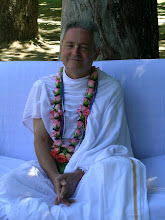
No matter what our descendant roots are, noble or of humble origin, rich or poor, old or young, illuminated or not, we are all destined to die. We know that it is inevitable, but we deceive ourselves by thinking that others will die before us, that we will be the last to go. Death always seams far away. Isn’t it a misleading way of thinking? Isn’t it an illusion, a dream? This makes us negligent and we shouldn’t believe it. We should be courageous and prepare ourselves, because sooner or later death will knock at our door. (Yamamoto Tsunetomo, samurai monk of ending 1600)
Death is most likely the most complex, painful and captivating phenomenon with which man has always had to deal with; generally it irrupts very strongly in the story of an individual, of a family unit and society reality, often leaving behind desperation, emptiness, and mental derangement.
Intelligent people of every era, though living in health, have come across this problem with genuine spirit of research, looking for the comprehension of the events that obligatorily move to a different level from the one merely pertinent to the sensorial perception.
The thought of death is located deep in the human soul and strongly affects the entire course of life and the character, mostly operating at a deep conscience level.
The objective of this analysis is the reinterpretation of the phenomenon, reinterpretation that takes the abandoning of those preconceptions structured in our mind since the green age, and connected to apparent realities and to the destructive image that the idea of death carries with itself.
To face this arcane and dramatic argument in the over-rational perspective, lightly expressed and surely unusual for the western culture, we need to take an “inner journey” , to the roots of our deepest and concealed experiences. The rational mind can capture and encode the physical reality, but not all the reality is reconductible to this level. How can the rational function explain in a full and satisfactory way the “intra-psychic” dynamics? How can it answer the existential questions on the imperceptible nature of oneself and explain the mystery of life? In front of death or of a disconcerting medical report even the most solid rationality will vacillate showing all its limits.
The sages of the Veda, mind and life scientists who belong to a millenary tradition, indicate how the human being complexity must be studied in its entire bio-psychic-spiritual reality. The classic Indian works explain that barriers between the physical, psychic-energetic and spiritual-metaphysic do not exist; the same human life is a combination of these three interactive dimensions of reality. Man does not only have a physical body but also a psychic body, which represents one of the fundamental bases for the development of the personality. But physical and psychic do not complete the picture of a human being: the physical body and the mental structure are two tools utilized from the purusha, the spiritual self, the subject that perceives, thinks and acts using in fact the body and the mind. Only those that are fully conscious of their self can influence deeply and with determination their physical and psychic bodies, activating inner resources that allows the rediscovering of the auto-healing path. What unifies the physical world and the psychical world, that makes them interactive and gives them a meaning is the self, the vital spark, the witness, the one that sees, that hears, that understands; all the rest are tools.
We need to underline that every living being is eternal, therefore the living entity does not have a beginning (anadi) or an end (ananta). The Veda knowledge teaches that we do not die with the body but at the moment of the spiritual journey out of the body we are moved elsewhere aboard of the psychic structure. From this perspective we can transcend the mistaken contraposition of the binomial life-death, rediscovering the living being’s dimension in which death, being a life phase, is not in opposition with life, but with birth. Similarly, the “asleep” state of consciousness, the one without dreams, is not in opposition with the “wake” state of consciousness. If we made life coincide exclusively with the wake experience, then we can say that sleep has nothing to do with life, but we know very well that it is not true at all. Without sleep there could not be the wake state: during sleep the neurons healthily interact, all the cells easily surrender their wasted products and regenerate.





No comments:
Post a Comment